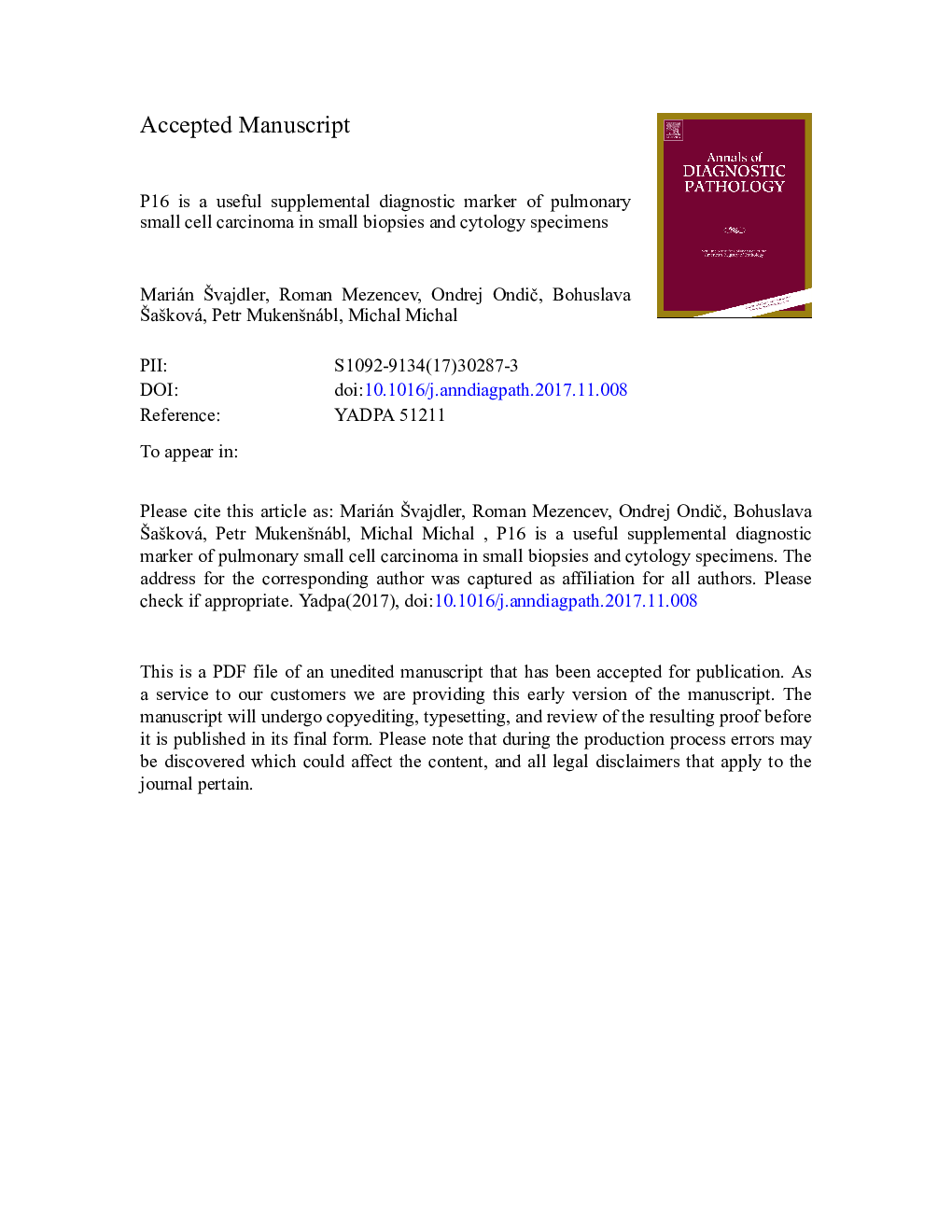| Article ID | Journal | Published Year | Pages | File Type |
|---|---|---|---|---|
| 8807195 | Annals of Diagnostic Pathology | 2018 | 27 Pages |
Abstract
Pulmonary small cell carcinoma (SCLC) is usually diagnosed in small biopsy or cytological specimens based on cytomorphology; however in ambiguous cases diagnosis requires additional support by immunohistochemistry. While TP53 and RB1 alterations with secondary overexpression of p16 are mainstay events in SCLC pathogenesis, diagnostic value of p16-positivity in the diagnosis of SCLC has not yet been fully investigated. We examined the expression of p16, CD56, synaptophysin (SYP), chromogranin A and thyroid transcription factor-1 (TTF1) in a series of pulmonary and extrapulmonary small cell carcinomas, pulmonary carcinoids and non-small cell lung carcinomas, and compared diagnostic performance of these markers in the diagnosis of SCLC. P16 was positive in 95 of 101 SCLCs, and displayed highest diagnostic sensitivity of ~Â 94%. Composite biomarkers CD56Â +Â p16Â +Â TTF1 and CD56Â +Â p16Â +Â SYP were both able to detect correctly all SCLC cases. Importantly, three (~Â 3%) SCLC cases completely negative for all conventional markers displayed diffuse positivity for p16. CD56 and p16 demonstrated highest concordance between paired small biopsy and cytology specimens. 50% of squamous cell carcinomas, ~Â 41% of adenocarcinoma/NSCLC-favour adenocarcinoma cases, and ~Â 93% of extrapulmonary small cell carcinomas also showed p16-positivity. Combination of CD56, p16 and TTF1 produced diagnostic classifier that outperformed best single marker CD56 in differential diagnosis between SCLC and NSCLC. In conclusion, in the appropriate morphological context p16 represents a useful supplementary marker for diagnosis of SCLC, even in cases where only cytological material is available.
Keywords
Related Topics
Health Sciences
Medicine and Dentistry
Pathology and Medical Technology
Authors
Marián Å vajdler, Roman Mezencev, Ondrej OndiÄ, Bohuslava Å aÅ¡ková, Petr MukenÅ¡nábl, Michal Michal,
